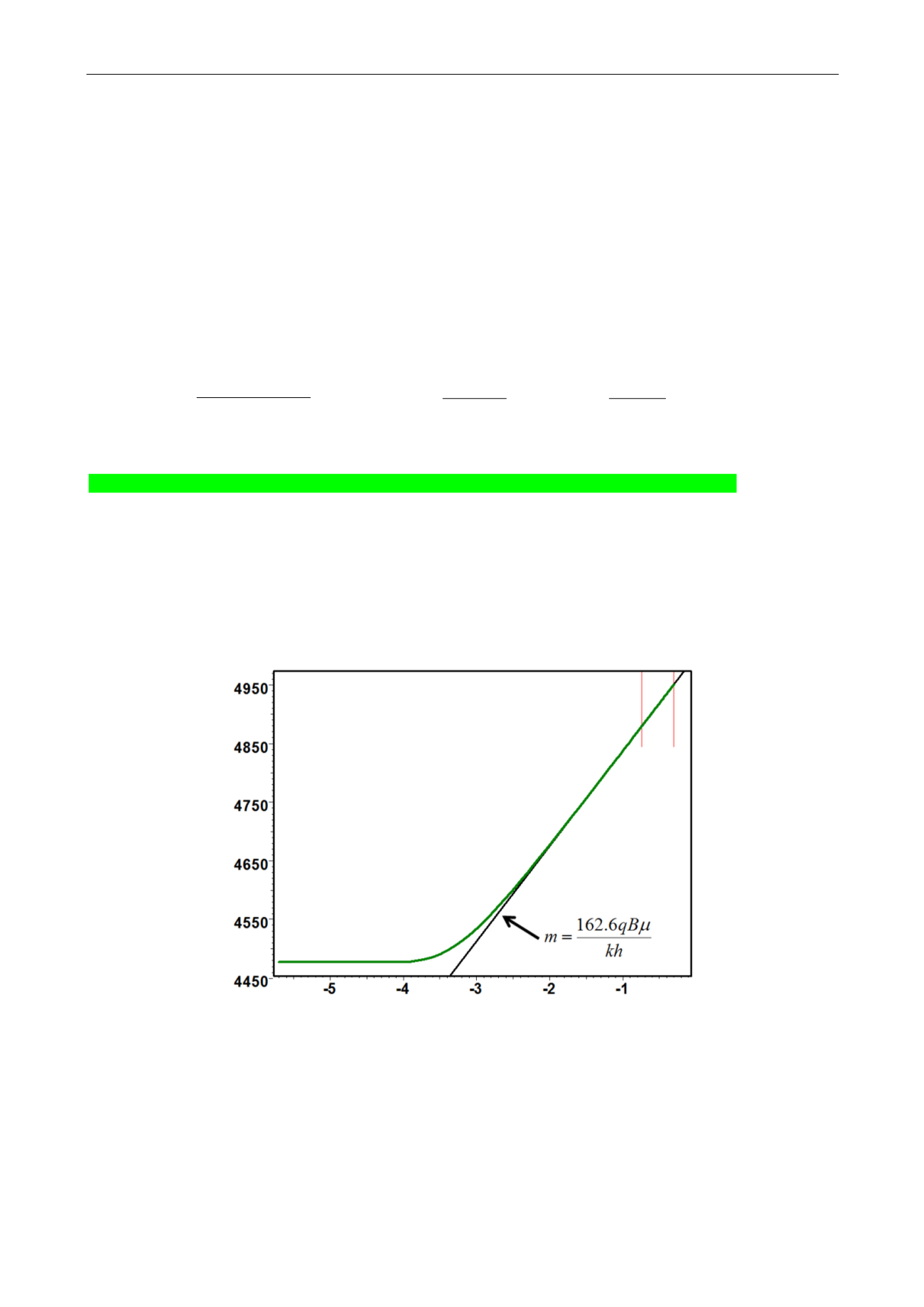

Dynamic Data Analysis – v5.12.01 - © KAPPA 1988-2017
Chapte
r 2 – T heory- p21/743
Area of investigation:
bt
A
inv
If the flow is not strictly horizontal and/or the thickness h is not constant, we will use:
Volume of investigation:
ct
V
inv
Although the following is valid at any point in the reservoir, we will now focus on the well
response, that will be taken at r=r
w
. As demonstrated in the previous section, there is a value
of time above which the Line Source Solution reaches a ‘regime’ where one can use an
approximation of the highest interest to the well test interpretation engineer. It is the semilog
approximation and this regime is called
Infinite Acting Radial Flow
, or
IARF
.
IARF: For
k
rc
t
wt
2
379200
228 .3
log
log
6. 162
2
wt
i
rc
k
t
kh
q
p tp
Convention: ln(x) is the natural logarithm; log(x) is the decimal
logarithm
IARF is characterized by linearity between the pressure change and the logarithm of time. This
is why we also call this the semilog approximation. The slope of the response allows the
calculation of the permeability-thickness, kh.
But before we develop further the IARF, we are going to introduce two other effects commonly
accounted for in Pressure Transient Analysis: Wellbore storage and Skin effect.
Fig. 2.C.3 – Semilog plot
















